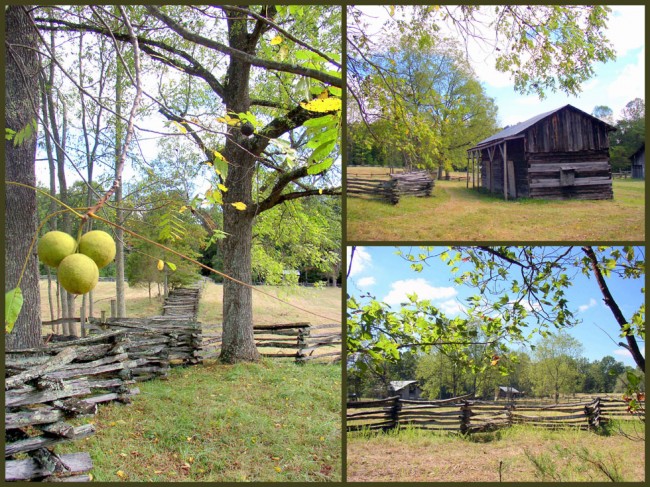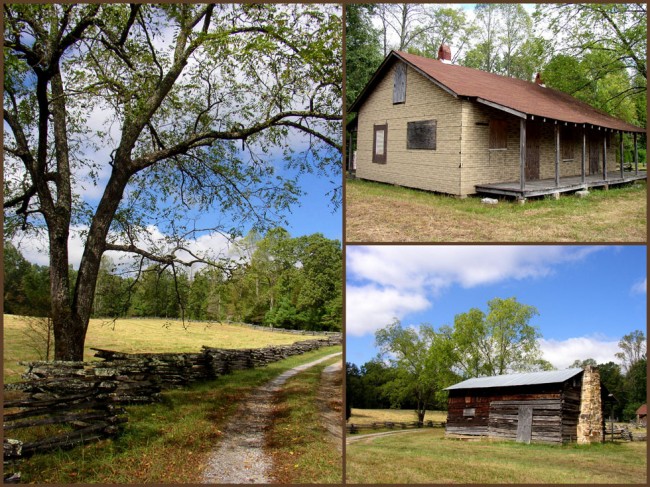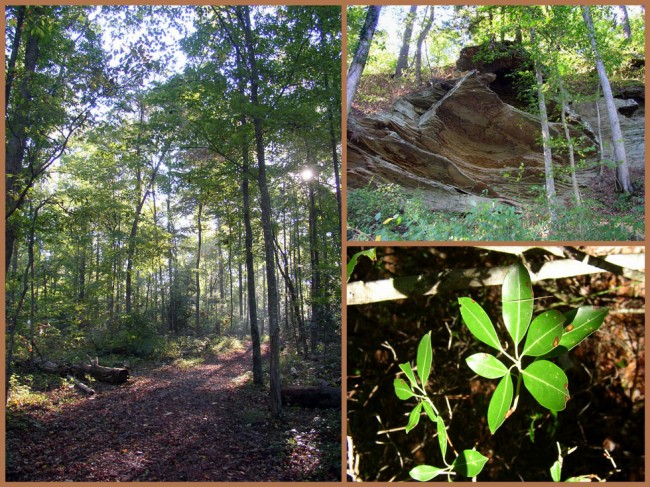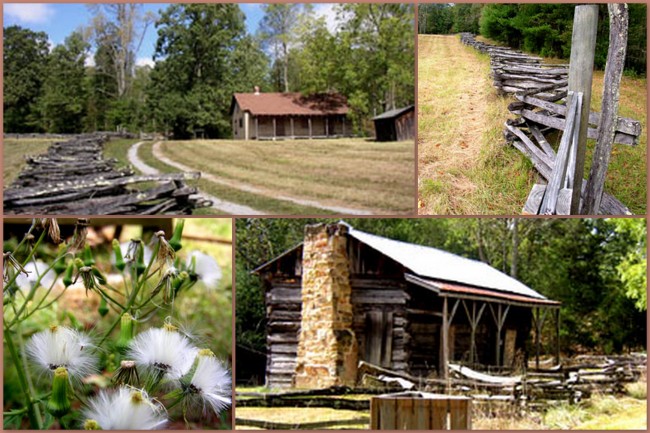Oscar Blevins Homestead, Tennessee
If you’re looking for an easy, enjoyable and rewarding hike in the Volunteer State, have I found the perfect place.
Located near the Bandy Creek Visitor Center in the Big South Fork River & Recreation Area, this 3.6 mile loop hike is a dandy. It combines: excellent trail conditions, fantastic diversity in plant and animal life and history. It doesn’t get any better than this for a family outing.
Make sure to stop by the visitor center and pick up a free trail map and guide produced by an old friend of mine, Park Ranger, Sue Duncan. It will tell you what each of the numbered posts along the way are all about. I found this brochure invaluable on my hike. If you want more detailed information on the area overall, you can purchase an excellent book titled, “Hiking the Big South Fork” which I found to be the perfect resource for planning my visit.
The hike begins near the Bandy Creek Campground. You have the choice of bearing to the right or left on the loop. I chose right, which in retrospect was the better way to go, saving the most impressive features of the hike for last.

Your walk will take you through a massive Virginia pine thicket, the smell of pine needles permeates the air everywhere on this trail. As you hike through, you’ll notice thousands of downed trees. This is due to damage from a 30-inch snowfall, as well as the impact of the Southern Pine Beetle. Take heart though, you’ll also see thousands of young pine trees rebuilding the forest. Along the way you’ll see: Mountain Laurel, Rhododendron, Witch Hazel and of course countless tree species.
BE WARNED: there is also an abundance of poison ivy along the way, avoid touching any “hairy” vines, and anything with sets of three leaves. The hairs, properly called rootlets can inflict a serious allergic reaction in many people. If burned in a campfire, it can lead to respiratory problems as well. During the spring and summer, you’ll find small, yellowish flowers along the vines. Though humans are generally allergic to poison ivy, many species of animals utilize it for a food source. Grouse, white-tailed deer squirrels and many song birds make this an important part of their diet.
The highlight of this stroll is the Blevins homestead. You suddenly pop into a cleared area where you’re immediately thrust back in time. The couple, Oscar and Ermon moved onto the farm in 1940, though the first home looks more like something out of the late 1700’s. The original log structure is still on the site, as is the “new” house built in 1950. The couple lived on their farm (along with their son, Lawrence) until 1980 when it was purchased for inclusion in Big South Fork.

I spent over an hour here, taking time to stroll around the farm, admiring the split-rail fences and taking in the peace and quiet. I finally tore myself away and headed back along the loop trail.
As I neared the end, I found myself immersed in a dense hardwood forest. Out of nowhere, there were streams to cross (on foot bridges), rock shelters and shelves as well as places where early Americans had lived.

According to archaeologists, there were two principle periods of occupation: from 8,000 to 6,000 B.C. and again from 2,000 to 1,000 B.C. The latter culture had evolved to the pottery stage of development, making their day to day lives easier.
After emerging from the forest at the end of the hike, you leave with the distinct impression that life in earlier times certainly had its charm. Since this experience, I have dedicated several hours of quality “daydreaming time” to pondering the simple lifestyle of these early farmers. I have wondered often what it must have felt like, sitting on the porch at the end of the day, what sounds would be heard in the shadows beyond the lamp or candlelight from the house, and more importantly, what sounds were absent.

